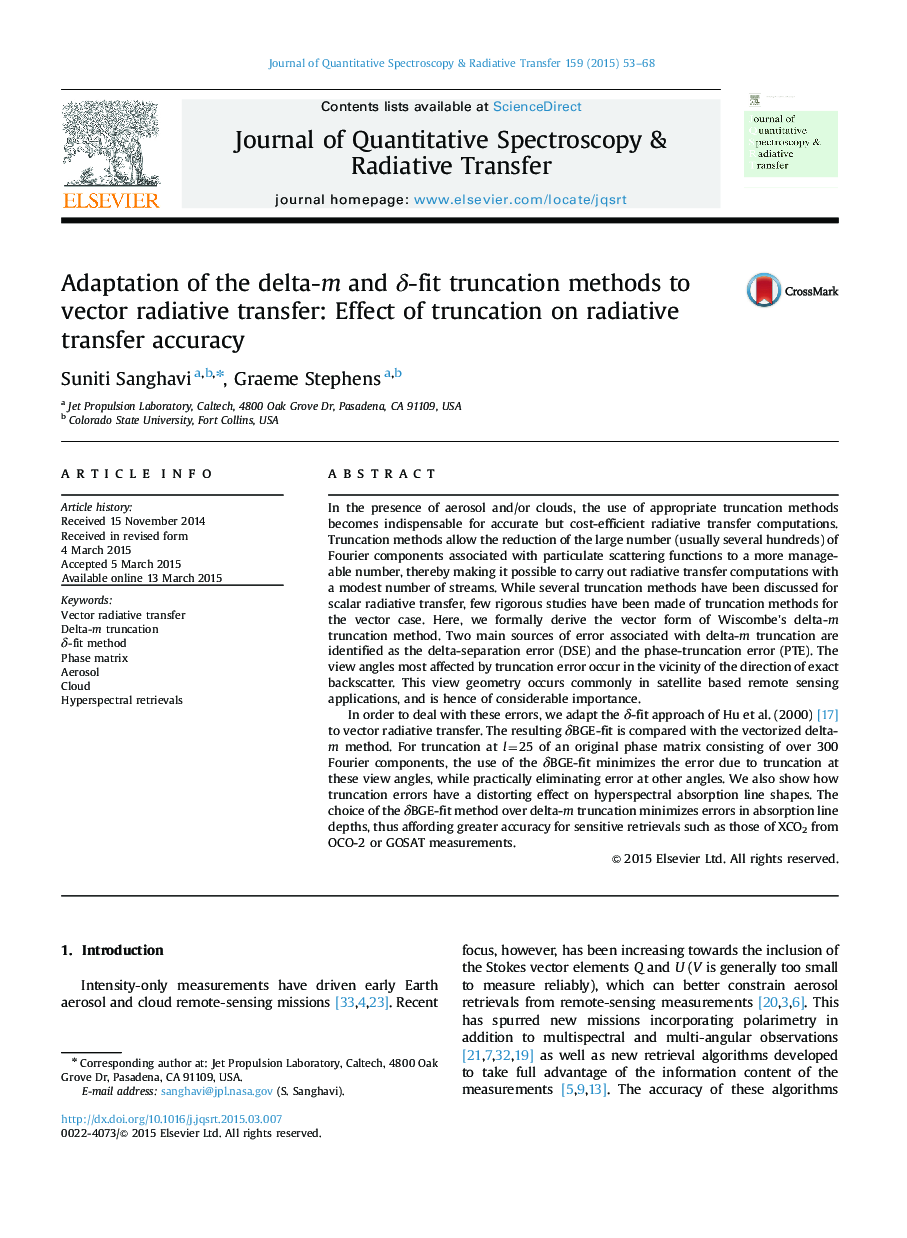| Article ID | Journal | Published Year | Pages | File Type |
|---|---|---|---|---|
| 5428019 | Journal of Quantitative Spectroscopy and Radiative Transfer | 2015 | 16 Pages |
â¢Derives vector form for delta-m truncation method.â¢Adapts δ-fit truncation approach to vector RTE as δBGE-fit.â¢Compares truncation methods for accuracy.â¢Examines artificial hyperspectral absorption effects due to truncation errors.â¢Examines effect of TMS correction on both truncation approaches.
In the presence of aerosol and/or clouds, the use of appropriate truncation methods becomes indispensable for accurate but cost-efficient radiative transfer computations. Truncation methods allow the reduction of the large number (usually several hundreds) of Fourier components associated with particulate scattering functions to a more manageable number, thereby making it possible to carry out radiative transfer computations with a modest number of streams. While several truncation methods have been discussed for scalar radiative transfer, few rigorous studies have been made of truncation methods for the vector case. Here, we formally derive the vector form of Wiscombe׳s delta-m truncation method. Two main sources of error associated with delta-m truncation are identified as the delta-separation error (DSE) and the phase-truncation error (PTE). The view angles most affected by truncation error occur in the vicinity of the direction of exact backscatter. This view geometry occurs commonly in satellite based remote sensing applications, and is hence of considerable importance.In order to deal with these errors, we adapt the δ-fit approach of Hu et al. (2000) [17] to vector radiative transfer. The resulting δBGE-fit is compared with the vectorized delta-m method. For truncation at l=25 of an original phase matrix consisting of over 300 Fourier components, the use of the δBGE-fit minimizes the error due to truncation at these view angles, while practically eliminating error at other angles. We also show how truncation errors have a distorting effect on hyperspectral absorption line shapes. The choice of the δBGE-fit method over delta-m truncation minimizes errors in absorption line depths, thus affording greater accuracy for sensitive retrievals such as those of XCO2 from OCO-2 or GOSAT measurements.
